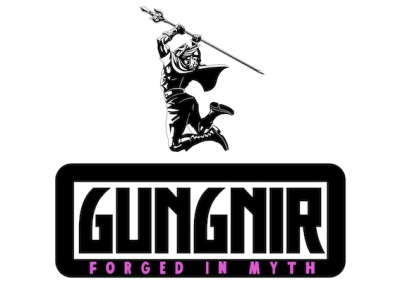An ICv2 Release. Comics and graphic novel sales topped $1.2 billion in 2019, according to a new joint estimate by Comichron's John Jackson Miller and ICv2's Milton Griepp. Total comics and graphic novel sales to consumers in the U.S. and Canada were approximately $1.21 billion in 2019, an 11% increase over sales in 2018. The increase was due to continued rapid gains in graphic novel sales in the book channel and single digit growth in sales of periodical comics in comic stores.
"Print comics sales had never before topped $1 billion in current dollars, and one has to go back to the boom of the early 1990s to find sales at or above that level when adjusted for inflation." Miller said of the new estimate.
"The massive shift to graphic novels as the preferred format for comics continued in 2019," Griepp said, "bringing sales in the book channel above the comic store channel in North America for the first time in the history of the medium."
Sales of kids graphic novels in the book channel, which includes chain bookstores, mass merchants, major online retailers, and Scholastic Book Fairs were once again driving the format. Digital sales were back to 2018 levels as the growth in catalogue titles across major platforms slowed. Sales of periodical comics in comic stores were up mid-single digits.
The pair also commented on the challenging environment for comics and graphic novel sales in the COVID era. "Demand for comics content remains high," Griepp noted, "and retailers have been finding inventive ways to fill that demand."
"The comics industry has displayed resilience during many difficult times over the decades," Miller said. "While the pandemic may prove its biggest test yet, 2019 provided the business with a strong base."
The analysts made two changes in methodology that affected estimates for 2019. First, they began including an estimate of graphic novels sold by comic stores from sources other than Diamond Comic Distributors; past estimates had assumed that sales of graphic novels by Diamond Comic Distributors accounted for nearly all of the graphic novels sold by comic stores. Second, they refined their estimate of Diamond’s North American sales to account for comics shipped from North America to locations beyond the continent, reducing the estimates of sales by North American comic stores accordingly. To some extent, these two changes in methodology offset.
As presented above and in the accompanying infographics, the analysis by Comichron and ICv2 was divided up between periodical comics (what some call "floppies" or "pamphlets"), graphic novels, and digital download-to-own sales. All print figures are calculated based on the full retail price of books sold into the market, and do not account for discounting or markup. Digital sales do not include subscription-based "all you can read" services.
The "Other" channel in our channel breakdown includes the Newsstand (periodical sales through specialty retail and mass merchant chains) and Crowdfunding (Kickstarter, etc.) channels. This year, those two channels each accounted for roughly half of the "Other" category.
Sources for the information include NPD BookScan, which collects weekly point-of-sale data on print books from over 16,000 locations including e-tailers, chains, mass merchandisers, independent bookstores, and more. NPD BookScan covers approximately 85% of the U.S. trade print book market. Some publishers classify titles that are primarily text, or art books, as graphic novels; those titles are removed from the analysis. The analysis also incorporates information released by Diamond Comic Distributors, the largest distributor of English-language comics and graphic novels in the world, on sales to comic stores.
Information is also gathered from a variety of other sources, including publisher, distributor, and retailer interviews.
This is the seventh joint market size analysis from ICv2 and Comichron; the first was for 2013 sales.
Click on the Gallery below to see the Comic Sales Report graphs for 2019.
ICv2
ICv2 is the #1 industry source on the business of geek culture, including comics and graphic novels, hobby games, and showbiz on its website, www.ICv2.com, and in its magazine, Internal Correspondence. For the people on the front lines of the geek culture business, staying ahead of the trends isn't something that can be left to chance-it's a basic necessity for being successful. That's why ICv2 is the #1 source of news and information for the buyers, gatekeepers, and tastemakers on the front lines. ICv2 is where trend-watching is a science.
Comichron
Comichron is the world's largest public repository of comic-book sales figures, featuring data from the 1930s to today about comic book and graphic novel circulation, cover prices, and market shares on its website, www.comichron.com. With data and analysis on the distant past as well as the present, Comichron serves as a trusted resource for academics studying the historical reach of the medium and for collectors seeking accurate information about how many copies of a comic book originally circulated.

According to New Estimate by ICv2 and Comichron
Posted by Milton Griepp on July 10, 2020 @ 9:59 am CT
MORE COMICS
Publisher Founded by Former Heavy Metal CEO to Expand with Three Imprints
August 15, 2025
The publisher, founded by former Heavy Metal CEO Michael Medney, will expand with three new imprints.
Madison, Wisconsin on August 10, 2025
August 15, 2025
We visited the large Barnes & Noble store in Madison, Wisconsin on a Sunday afternoon, and found manga and merch displays expanded.
MORE MARKETS
Superheroes are Fresh, Author Titles are Stale, and Manga Just Keeps Plugging Along
August 14, 2025
DC Comics' Compact Comics and Marvel Comics' Premier Editions take over the Superhero chart with a flurry of newer titles, while the Author chart has just one new release.
New Anime Drive Manga, Everyone Loves the Turtles, 'Solo Leveling' Is Missing
August 12, 2025
New anime propelled two manga onto the chart for the first time, a new TMNT hardcover appears, and for the first time in a long time, Solo Leveling is absent from the Top 20.



 View Gallery: 3 Images
View Gallery: 3 Images 



